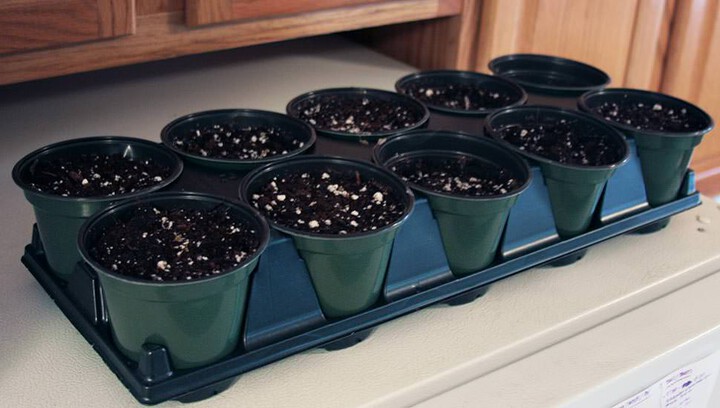If you’re eager to get growing before the weather warms up, starting your garden from seed is an easy, inexpensive way to get ahead of the game. Starting plants from seed isn’t just a money-saving activity. Even the smallest child experiences pride and wonder watching a dormant seed he planted himself miraculously transform into a vibrant, living thing. It’s no different for adults.
·Start Your Seeds
A great wintertime activity is to start your perennial seeds—outdoors. It can’t get much easier than this project. Take a plastic flat and fill it with small pots, maybe three- or four-inch in diameter—garden centers and home stores will have the supplies you need. Fill the pots with moist potting soil and plant the seeds.
A good rule of thumb is to plant the seeds about as deep as they are wide and to use more per pot of the smaller seeds and fewer of the bigger ones. Water well with the “Flower” setting of your Gilmour Rear Control Watering Nozzle and pop the whole tray outdoors in a protected area—on the ground is better than on a paved surface. Check them every so often and water if the soil looks dry, and then wait for your seeds to sprout.

·Grow Indoors
Want to start seeds indoors? You can have an elaborate or as simple a system as you need, but start with these essentials:
For the most basic setup, fill your containers with soil and place on a tray, plant the seeds, water gently and put the whole thing on top of the refrigerator—yes, the refrigerator. The heat from the appliance will encourage sprouting, and when the plants are up, you can move them to a sunny window.

Make sure to rotate the plants daily so they don’t “stretch” or elongate to try to get closer to their light source. If using a grow light, always have it about one inch above the top of the seedlings—it can be slightly higher the bigger they get.
·Keep Seeds Healthy
It’s important to use sterile seedling mix when starting seeds indoors because tiny seedlings are much more susceptible to “damp-off,” a fungal disease that weakens the stems at the point of soil contact. A sterile seeding mix also prevents annoying pests like fungus gnats.
To develop sturdier plants and prevent disease, encourage air circulation. Direct a fan at the seedlings for a good part of each day, changing up its position frequently. This is especially effective for producing nice, stout specimens of tomatoes and peppers. When watering, be sure to use a very gentle spray until the plants are strong enough to stand up to a stronger flow.
·Practice Makes Perfect
If your first attempt at seed starting doesn’t go quite as planned, don’t fret—just start over. Growing plants from seed isn’t difficult, but as with anything else, it does require a little trial and error to become an expert. Keep at it, and soon you’ll be rewarded with healthy, young plants that are ready to take their place in your garden.